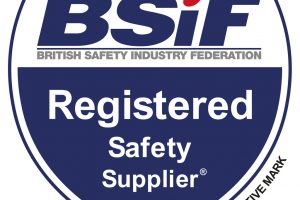In the spotlight with Paul Bruton
For the past 44 years, Paul Bruton has been a key figure within both the industry, providing expert knowledge and insights to trade bodies, as well as in his role at WernerCo. In his role as chairman at The Ladder Association, he has supported the organisation in tackling key issues facing the industry. Here, Paul reflects on his time within the industry and what he expects is still to come ahead of his retirement in June 2020.
How did you get into the industry?
My father, John Bruton, and Frank Abbey started a ladder manufacturing company in 1968 called Abru in Launceston, Cornwall. Although I was still at school at the time, I along with the rest of my family helped this start-up venture. After school I would often help by packing the ladders, then when I was old enough I started on the shop floor as a production operative. The business was sold in 1986 but I stayed on and worked my way up from production operative to eventually becoming a director of the company.
What do you most enjoy about your current job as product development director?
The industry is ever changing, which means that the needs of people using access equipment are always evolving too. The most important thing for someone overseeing the development of new products is to engage with end users to establish how they use the products and how we can address their needs to fill any gaps in the market, in order to make their work easier and of course safer.
What are your most memorable successes over the years at Abru and WernerCo?
This is a difficult question as there have been so many! The first thing that comes to mind is the development of our range of Loft Ladders. Although these are a consumer product, we have seen a significant reduction in home accidents since their launch as homeowners would previously balance on the top of stepladders to pull themselves in and out of the loft.
As houses become smaller and storage space at a premium, the loft is now being used far more frequently as the location of the boiler, so providing safe access for engineers is equally important.
More laterally the most impactful development has been the introduction of fibreglass ladders, which are an essential for electricians and plumbers but also offer major benefits for professional users across other trades.
What’s the next big thing in the product pipeline?
Without wanting to give too much away, I still feel that there could be better solutions for low-level access requirements. At WernerCo, we are in the process of launching the BoSS Pod, a low-level podium. This new all-in-one solution enhances the user’s safety as there are no separate components that can be left off during assembly.
What are the biggest challenges with regard to access equipment facing the health and safety industry in the UK?
Although there’s been a lot done to improve the design of access equipment, falls from height are still one of the leading causes of workplace fatalities and injuries. Over the last five years nearly 200 people have been killed following a fall from height at work, and alarmingly almost 29,000 injuries have been reported.
While a lot of focus is placed on professional safety, it’s important not to forget about the consumer too, as anyone carrying out DIY maintenance tasks around their home are also at risk. To understand these causes of falls better, organisations such as the Ladder Association are calling on the government to publish hospital accident data gathered from A&E departments.
Another big challenge in the industry is educating people on how invaluable training can be. Many people who work at height think an accident will never happen to them and don’t believe there is any need for training. While cost and time spent off the tools might minimally impact a business, the life-changing consequences from a fall can be much greater, and we’re working hard to make people understand that this small investment can have huge benefits.
Despite these challenges, I’m pleased to say that the UK is at the forefront of work at height safety, but there’s still more work to be done – one accident is one too many!
As chairman of the Ladder Association, can you tell me what they do?
The Ladder Association is the not-for-profit lead industry body dedicated to promoting the safe use of ladders and stepladders. Our members include manufacturers, rental companies, training providers and ladder users, meaning we’re able to understand the issues facing customers at every different level.
We work closely with the HSE and the Access Industry Forum (AIF) to support codes of good practice, minimum standards for equipment, trained and qualified operatives and education in the work at height sector. To improve user safety across the country, we also offer our industry-recognised LadderCard training scheme, publish safety guidance, and a code of practice as well as technical notes can all be found on our website.
How has working at height changed over the years that you’ve been in the business?
The introduction of the Work at Height Regulations in 2005 have undoubtedly had the biggest impact, providing a much greater emphasis on risk assessment and more onus on both employers and end users to ensure safe working practices. As a result, the UK has consistently had some of the lowest workplace fatality and serious injury rates in the European Union, which just goes to show the positive impact this has had.
What do you think can be done to make working at height even safer?
Sadly, most falls from height are as a result of user error, so no matter how safe we make our products to be, if the user does not evaluate the risks of working at height and take safety seriously, there will always be a chance of accidents happening.
Education and training are key elements that can make working at height safer. Earlier this year, we saw the All Party Parliamentary Group (APPG) on Working at Height – supported by the Ladder Association and all 11 members of the AIF – publish their first report ‘Staying Alive’. This report called for enhanced reporting of all near misses and accidents, and is just one recommendation that could help create a safer environment for the millions who work at height every day.
Who is set to take over from you and what are their main opportunities?
We have been very fortunate in recruiting a very gifted director of engineering, Steve Lock, who joined us in November 2019 and will help to strengthen our offering even further in the future. While we have had a number of exciting developments, I still believe that there are new opportunities out there, the main one being to provide innovative and end user focussed equipment for low level access requirements, and I look forward to seeing how we achieve this.
Any advice to someone coming into the industry?
Although the industry is long established and highly governed by various standards, I would always say don’t be afraid to bring new ideas to the table, whether it be in product design or access solutions. Make sure you make the most of every opportunity available in terms of training available through industry bodies such as the Ladder Association and PASMA and most of all engage with the end users, to really educate yourself about key issues the industry is facing.
Paul Bruton is product development director at WernerCo. For more information, visit www.wernerco.com
HSM publishes a weekly eNewsletter, delivering a carefully chosen selection of the latest stories straight to your inbox.
Subscribe here





